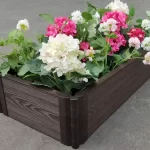Spring is the perfect time to give your yard some much-needed attention after the long winter months. Spring cleanup is essential for your yard’s health as it prepares your lawn and plants for the growing season ahead. By removing debris, pruning, trimming, and preparing the soil, you can ensure that your yard will thrive throughout the year.
In this article, we’ll provide you with some helpful tips and ideas for spring cleanup. We’ll cover everything from clearing debris to soil preparation and pest control. Whether you’re a seasoned gardener or just starting out, we hope this article will inspire you to create a beautiful and healthy yard.
Clearing Debris
Clearing debris is a huge part of spring cleanup, as it helps to prevent disease and insect infestations in your yard. Dead leaves, fallen branches, and other debris can provide a breeding ground for pests and diseases that can damage your plants and lawn.
To clear debris from your yard:
- Start by raking up any dead leaves and grass clippings.
- Remove fallen branches or twigs, and clear out debris from flower beds and around trees and shrubs.
- If you have a lot of debris, consider renting a chipper to turn branches and twigs into mulch.
Debris can affect plant growth by blocking sunlight and reducing air circulation, leading to disease and insect infestations. By removing debris, you can improve the overall health of your yard and ensure that your plants have the best chance to grow and thrive.
Pruning and Trimming
Pruning and trimming are essential for maintaining the shape and health of your trees and shrubs. They can also promote new growth and flowering, which can improve the overall appearance of your yard.
To prune and trim your trees and shrubs:
- Start by removing any dead or diseased branches.
- Cut back branches growing too close to your home or other structures, and remove branches crossing or rubbing against each other.
- For shrubs, shape them by cutting back any overgrown or straggly branches.
Pruning and trimming can also improve air circulation and reduce the risk of disease and insect infestations. By maintaining the shape and health of your trees and shrubs, you can improve the overall appearance of your yard.
Lawn Care
Lawn care is important for maintaining the health and appearance of your grass. It can also prevent the growth of weeds and improve the overall health of your yard.
To care for your lawn:
- Start by removing any dead leaves or debris.
- Rake any matted areas and aerate your lawn to promote healthy root growth.
- Fertilize your lawn with a balanced fertilizer, and water your lawn deeply and infrequently to encourage deep root growth.
Lawn care and maintenance can affect grass growth by promoting healthy root growth, reducing the growth of weeds, and preventing disease and insect infestations. You can create a healthy and beautiful yard by caring for your lawn.
Soil Preparation
Soil preparation is important for giving your plants the nutrients they need to grow and thrive. It can also improve soil drainage and aeration, preventing disease and improving your yard’s overall health.
To prepare your soil, start by removing any debris or weeds. Test your soil; using soil testing kits, or you can ask professionals to do this for you; to determine its pH level and nutrient content and amend it as necessary with organic matter or other fertilizers. Use a garden fork or tiller to loosen the soil and add mulch to retain moisture and prevent erosion. Mulch is a layer of material, such as shredded leaves, bark, or straw, that is spread over the soil surface in a garden or landscape.
Good soil structure is an essential factor for promoting healthy plant growth. The ideal soil structure provides adequate pore space for air and water movement and good soil aggregation to support plant roots. Soil that is too compacted or too loose can negatively impact plant growth by limiting root development and preventing water and nutrient uptake.
Preparing the soil before planting is important to achieve good soil structure. This can include tilling the soil to break up any compacted areas and adding organic matter, such as compost or aged manure, to improve soil aggregation and nutrient content. Adding soil amendments like perlite or vermiculite can also improve soil drainage and aeration, further promoting good soil structure.
In addition to proper soil preparation, avoiding over-tilling or over-compacting the soil is important, which can negatively impact soil structure and limit plant growth. Proper watering practices, such as deep and infrequent watering, can also help maintain good soil structure by preventing soil compaction and promoting healthy root growth.
Pest Control
Pest control is an essential aspect of maintaining a healthy and beautiful yard. Pests like insects and rodents can damage your plants and lawn and quickly spread throughout your yard. It is important to take early measures to prevent an infestation from taking hold and protect the health and appearance of your yard to control pests.
One way to control pests is by identifying the type of pests and the plants they affect. This can help you determine the best pest control methods to use. For example, if you have aphids on your roses, you can use a natural or organic pest control method, such as spraying the affected plants with a solution of water and insecticidal soap. This will help kill the aphids without harming beneficial insects such as ladybugs.
Another effective pest control method is to practice good lawn and garden maintenance. This includes regular weeding, pruning, and removing dead or damaged plant material, which can attract pests.
Additionally, creating a healthy and balanced ecosystem in your yard by planting various plants and avoiding chemical pesticides can help to naturally deter pests and promote beneficial insects.
Conclusion
In this article, we’ve discussed the importance of spring cleanup for your yard’s health. We covered tips for clearing debris, pruning and trimming, lawn care, soil preparation, and pest control.
Spring cleanup is an essential part of maintaining a healthy and beautiful yard. By following these tips, your yard will thrive throughout the year.
We encourage readers to share their own spring cleanup tips and experiences in the comments section below. By sharing your knowledge and experience, you can help others create healthy and beautiful yards.






